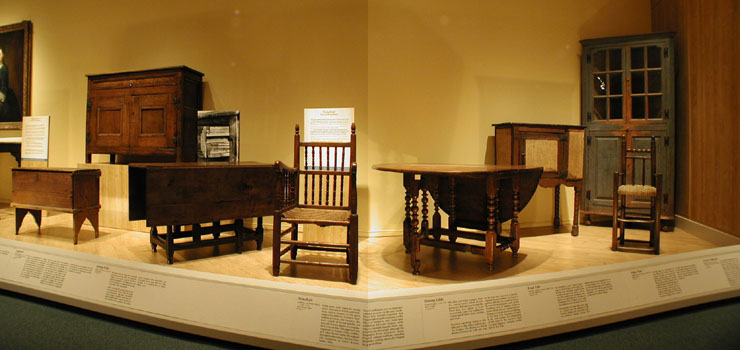

| High
Chair Middle Tidewater Virginia, 1700-1750 Black walnut Catalog no. 3 |
| Corner
Cupboard Tidewater Virginia, 1735-1745 Yellow pine, tulip poplar, and black walnut Catalog no. 150 |
| Food
Safe Southern, possibly Virginia, 1680-1720 Ash and yellow pine Catalog no. 147 |
| Dining
Table Eastern Virginia, 1700-1730 Black walnut Catalog no. 56 |
| Armchair Southern, Southside Virginia, 1700-1750 Ash and red cedar Catalog no. 2 |
| Dining
Table Eastern Maryland, 1740-1755 Black walnut Catalog no. 57 |
| Cupboard Tidewater Virginia, 1680-1710 Black walnut with yellow pine and tulip poplar Catalog no. 148 |
| Chest Southern, probably Southern or Eastern Virginia, 1680-1730 Black walnut and yellow pine with oak Catalog no. 104 |